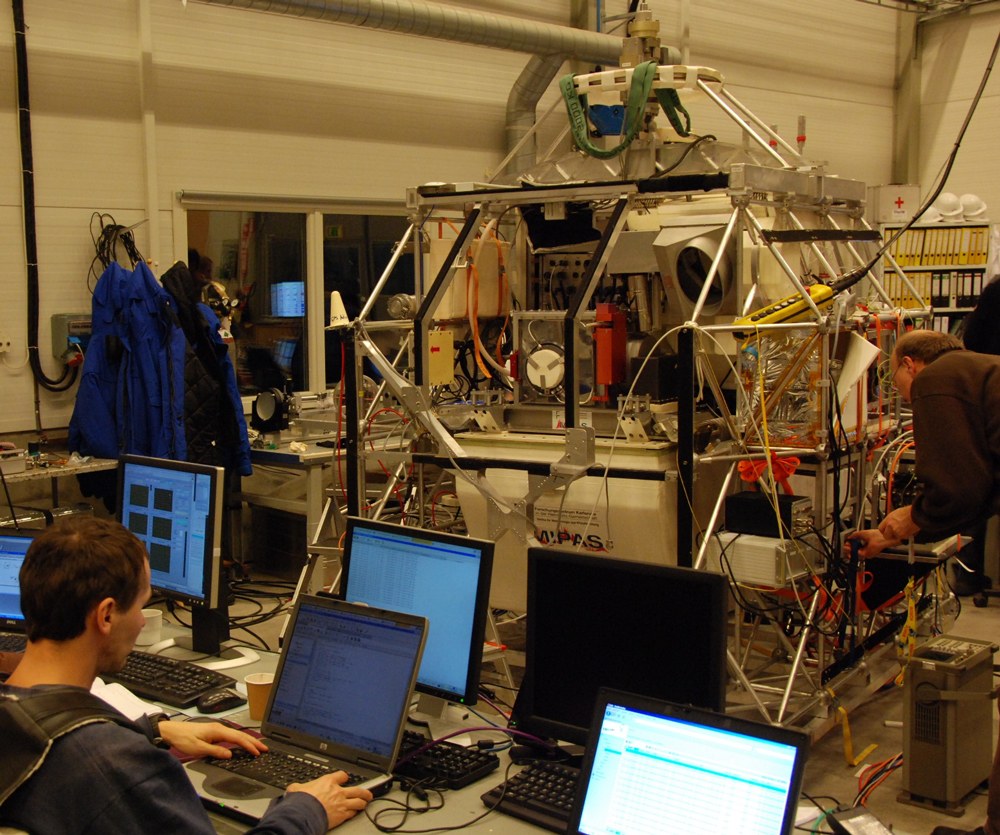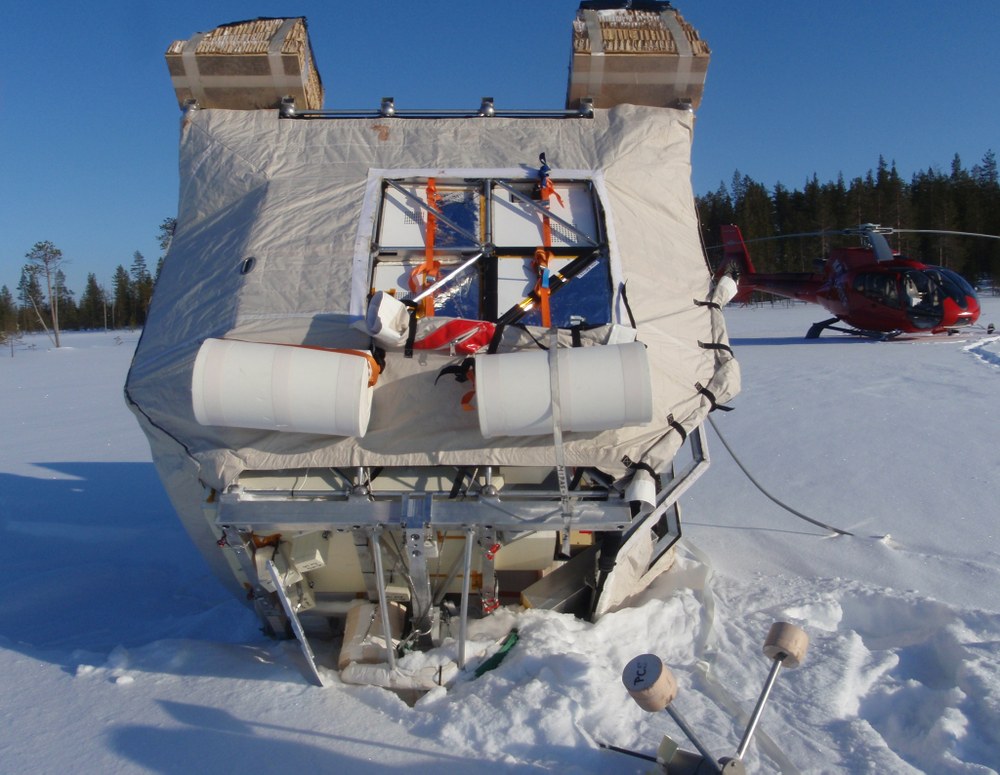First successful TELIS flight
TELIS (TErahertz and submillimeter LImbSounder) is a three-channel heterodyne spectrometer cooled with liquid helium. It was financed by DLR and developed at the Remote Sensing Technology Institute in the Experimental Methods department. The development of TELIS benefited from international cooperation which pooled available specialist expertise. Two channels were provided by the Rutherford Appleton Laboratory, Great Britain, (499-503 GHz) and SRON (Netherlands Institute for Space Research), (600-650 GHz), whereas the terahertz channel (1800-1900 GHz), optics, mechanics and control system came from DLR. In addition to these three groups, Bern University in Switzerland, Chalmers University in Sweden, and the Jet Propulsion Laboratory in California, USA, were also involved.

TELIS uses a limb sounding mode in which the instrument is positioned above the atmospheric layers in question and measures spectra at various tangential elevations of a beam aimed obliquely downward. The vertical resolution with this method is ca. 2 km. TELIS is operated from a stratospheric balloon and is installed on the gondola of the MIPAS-B Fourier transform spectrometer (which has been well tested for over 20 years) of the Institute of Meteorology and Climate Research at Forschungszentrum Karlsruhe. Together, MIPAS and TELIS represent a complete chemistry mission for the tropopause and stratosphere which is unique worldwide. Also on board is a mini-DOAS from Heidelberg University. TELIS measures the thermal emission of molecular lines against the cold cosmic background, thereby providing concentration profiles of OH, HO2, ClO, BrO, HCl, CO, O3, H216O, HDO, H218O, H217O and HOCl.

TELIS first flew in June 2008 in Teresina, but no science data could be obtained because of thermal problems encountered during ascent through the troposphere. However, the equipment was redesigned based on this experience so that on a second flight in Kiruna (northern Sweden) in March 2009 first measurements could be successfully made. At its flight altitude the balloon contains 400,000 m3 of helium and has a diameter of 90 m, making it approximately the size of a soccer field and as high as Munich’s Frauenkirche. On the ground the volume is reduced by a factor of about 200.
The flight on March 11, 2009 lasted ca. 12 hours, whereby an altitude of 36,000 m was reached, which is about three times higher than a passenger plane flies. The gondola landed by parachute in Finland near the Russian border, and despite the hard landing, the instrument survived the flight virtually undamaged.

In the meantime the data is being analyzed, additional characterization measurements made, a processing chain established, and scientific assessments undertaken. In parallel, TELIS is being prepared for future flights and for use on the DLR research aircraft HALO.
